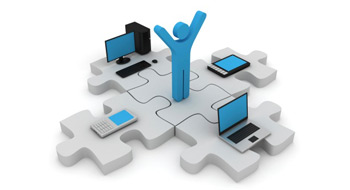

Despite the sentiment that we have entered a digitally dominant age, traditional benefits communication vehicles have not yet become obsolete.
Employers report they are taking a multi-channel approach to meet the needs and preferences of their employees, according to a Prudential Insurance Company of America research brief.
Group meetings and seminars are still considered the most successful communication methods, with 74% of employers using them with great to moderate success.
“Digital communication vehicles continue to develop and progress around us but are not completely eclipsing traditional avenues of communication,” says Jean Wiskowski, vice-president, sales strategies, with Prudential Group Insurance. “Rather, employers are finding themselves relying on a full suite of tools to reach a dynamic and evolving workforce.”
Individual meetings, email, toll-free numbers and mail at home rounded out the top five most successful communication methods. Both targeted marketing mailings and mail received at home drastically spiked year over year with employers reporting each increased by 13% and 14%, respectively.
Many employers also report that newer methods of communication are being used with great success including external social media networking and video or DVD presentations.
Employees do exhibit a preference for communication vehicles in the digital realm with work email (47%), personal email (28%) and online avatars (19%) being named as the top three. Group meetings (19%) and individual meetings (18%) rounded out the top five.
For employees, the trajectory of benefits communications is clearly moving toward digital: over the last year, more employees have enrolled, obtained plan information and used financial planning tools on computers and mobile devices. Employees also feel that a majority of benefits-related activities will be available via smartphones or tablets in the next five years.
“As individuals increasingly choose digital tools to take in information, benefits communications will be no different,” she explains. “Employers and carriers will need to look at successful aspects of non-digital communications and incorporate them into the digital realm.”
As the trend toward year-round benefits education and enrollment strategy gathers steam, employers are examining additional methods carriers can use to communicate to employees outside of their annual enrollment period. To support this strategy, employers say email would be the optimal vehicle, with 84% stating it would be the best method. This finding also echoes employee sentiment.
Home mailing (77%) and signing up on a benefits website (76%) round out the top three best communications methods outside of enrollment for employers. Notably, 46% of employers say that text messages to mobile phones were a good way to reach employees.
“The current environment for benefits communication vehicles is an expanding and changing one,” says Wiskowski. “As employers, brokers and employees begin to examine emerging communication vehicles, it is important to recognize the value traditional ones still hold.”
Related articles:
